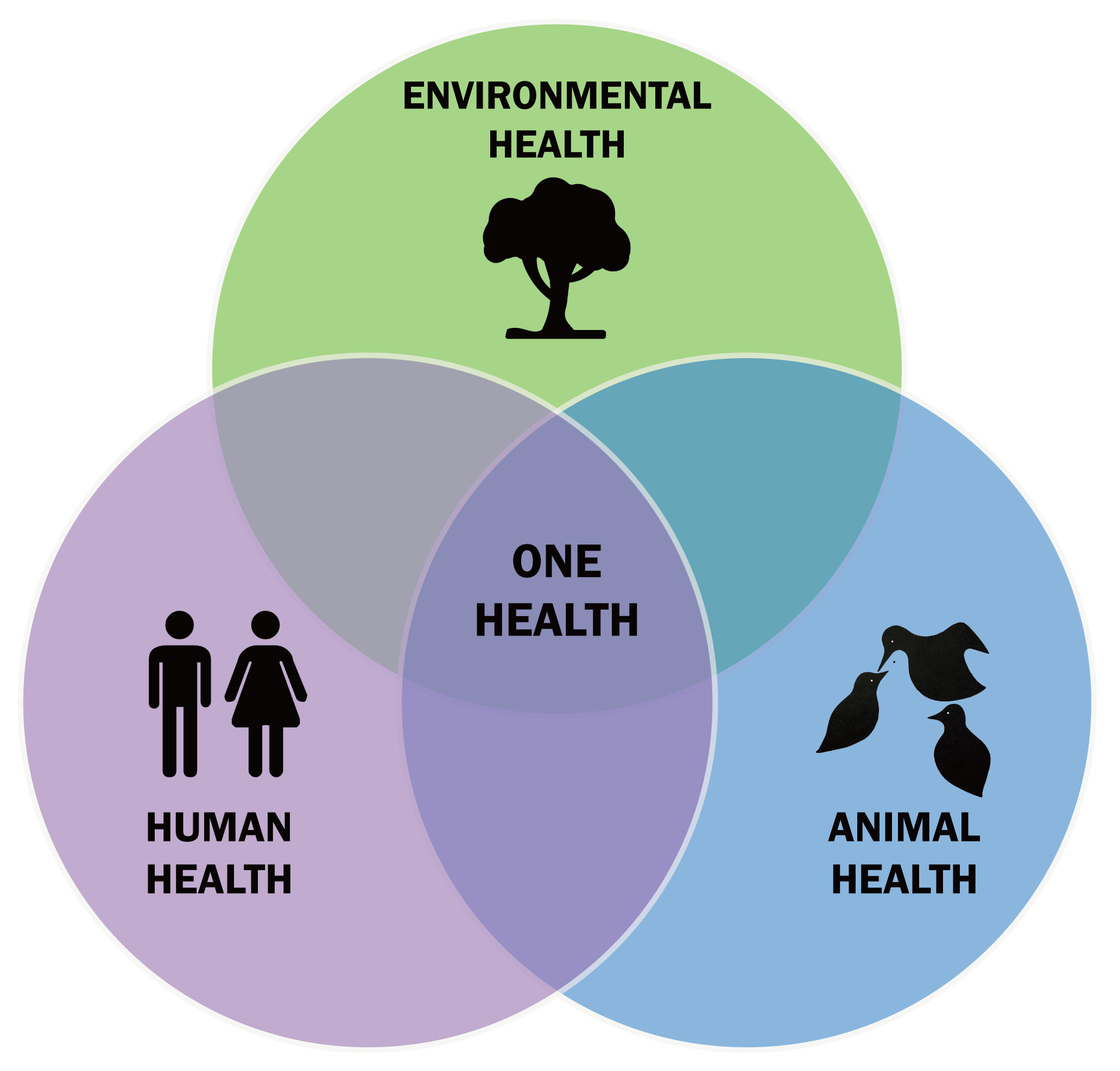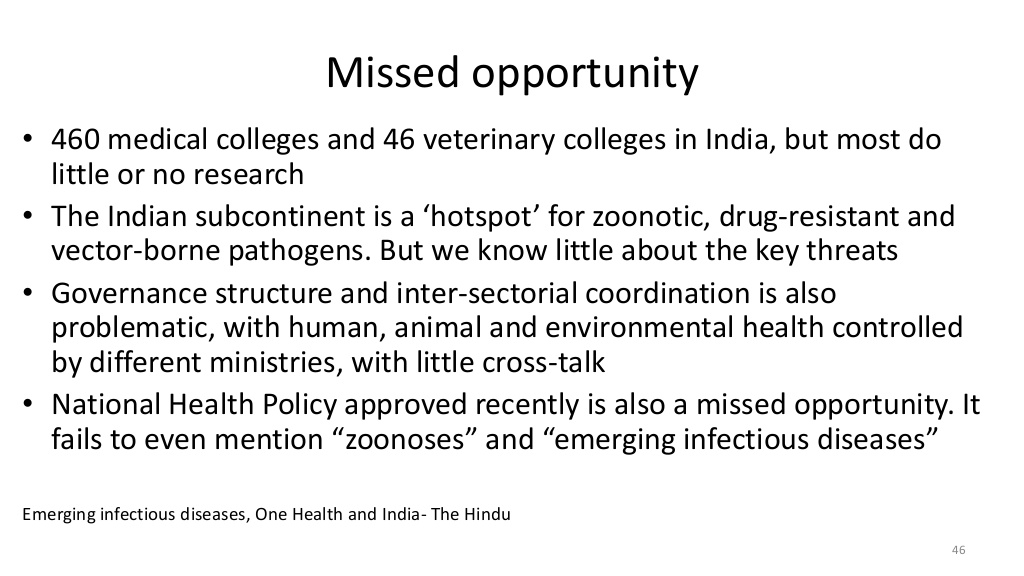



 What is One Health Concept?
What is One Health Concept?One Health is an approach that recognizes that the health of people is closely connected to the health of animals and our shared environment.
This concept has become highly relevant as the world continues to grapple with the COVID-19 pandemic.


Outcome - The Wildlife Conservation Society held a conference in New York called One World, One Health. Out of this meeting a series of strategic goals known as the ‘Manhattan Principles’ was derived.







The ongoing COVID-19 Pandemic is a testimony of the catastrophe and impact of zoonotic diseases on humans.




© 2024 iasgyan. All right reserved